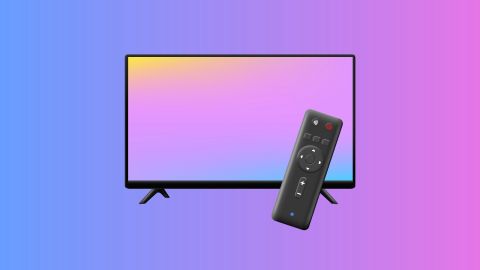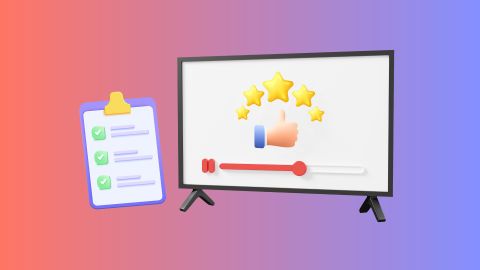Smart TVs first entered the market in the late 2000s, marking a shift from traditional broadcast to internet-enabled entertainment. Early models featured basic apps like YouTube, weather updates, and simple web browsers, offering limited functionality compared to today’s standards. Connectivity options included Ethernet ports, and only a few supported WiFi. Processing power was modest, leading to slower app performance and minimal multitasking ability.
Despite these limitations, smart TVs laid the foundation for integrated content viewing by bringing streaming and online media to living rooms. Over time, more features like app stores, voice search, and personalised recommendations were introduced. If you are interested in how far smart televisions have come, you can browse a wide range of
TVs on Bajaj Mall, where modern models come with enhanced operating systems, powerful processors, and improved app ecosystems. The evolution from early models to today's smart TVs shows just how much technology has advanced.
Milestones in smart TV development over the years
Smart TVs have come a long way from their basic beginnings, evolving into feature-rich entertainment hubs. Over the past decade, several key milestones have shaped the development of smart televisions.
Here are some major developments in smart TV technology.
- 2007–2010: Early smart TVs launched with basic internet browsing and limited app support, like YouTube and weather updates.
- 2011–2013: Introduction of app stores allowed users to download and install third-party apps for more personalised content.
- 2014–2016: Integration of voice control, screen mirroring, and better UI design made interaction smoother.
- 2017–2019: AI-driven features like content recommendation and smart assistants (Google Assistant, Alexa) became mainstream.
- 2020 onwards: Support for 4K/8K streaming, Dolby Atmos, and seamless OTT platform access has become standard.
- Recent trends: Smart TVs now include gaming modes, low-latency features, and eco-friendly power management systems.
These milestones highlight how smart TVs have transformed the way people access and enjoy content.
If you are planning to experience this evolution in a compact form, consider a
32-inch LED TV that brings together many of these advanced features in an affordable package.
The rise of AI and voice assistants in smart TVs
Smart TVs have undergone a major transformation with the integration of artificial intelligence (AI) and voice assistants. These technologies have not only improved user convenience but also made entertainment more interactive and personalised. With AI, smart TVs can now analyse your viewing habits to suggest content based on your preferences, automate picture and sound settings for different content types, and even manage system updates in the background. This means users spend less time searching and more time watching what they enjoy.
Voice assistants have also made navigation smoother and hands-free. Integrated assistants like Google Assistant and Amazon Alexa allow users to control the TV, search for content, adjust volume, and even manage smart home devices using simple voice commands. This has been especially helpful for elderly users or those with mobility challenges. Over time, these voice systems have become smarter, supporting multiple languages and recognising natural speech patterns for improved accuracy.
Many
Android TVs come with built-in AI capabilities and voice assistant support, making them a popular choice among users seeking a smarter and more intuitive viewing experience. With these advancements, modern smart TVs have essentially become central hubs in connected homes, integrating entertainment, information, and utility into one platform.
AI continues to evolve, enabling features like facial recognition for personalised profiles, auto-mute during phone calls, and ambient light adjustment. The focus is now shifting towards adaptive intelligence, where TVs learn and adapt over time to improve performance and relevance. As technology advances, AI and voice control will play an even bigger role in shaping how we interact with home entertainment systems. This shift reflects a larger trend towards automation and user-centric design in the television industry.
How smart TVs have changed home entertainment
Smart TVs have transformed the way people experience content at home. Unlike traditional televisions that relied only on cable or satellite channels, smart TVs offer direct access to internet-based content, streaming apps, and on-demand services. Features like voice search, personalised recommendations, and multi-device connectivity have made content discovery seamless and engaging. Viewers now enjoy full control over what, when, and how they watch. If you are planning to upgrade your setup, a
40-inch TV from Bajaj Mall offers a great balance of size and smart features for living rooms and entertainment areas.
Below is a look at how smart TVs differ from older models.
| Feature | Traditional TV | Smart TV |
| Content access | Limited to cable/DTH | OTT platforms, internet, and live TV |
| Control options | Manual remote only | Remote, voice commands, mobile apps |
| Updates and features | Fixed functionality | Regular software updates and new features |
| Connectivity | Basic input ports | HDMI, Wi-Fi, Bluetooth, screen mirroring |
| User experience | Linear viewing | On-demand, personalised, multi-language UI |
This shift has redefined home entertainment, turning your TV into an all-in-one media hub.
Future of smart TVs - Predictions and emerging trends
Smart TVs are set to become even more intelligent, connected, and personalised in the coming years. Innovations in display, processing, and AI will continue to shape how viewers interact with their devices.
Here are some key trends and predictions for the future of smart TVs.
- AI-driven personalisation: TVs will get better at learning user behaviour to recommend content more accurately.
- Voice-first control: Deeper integration with voice assistants will allow near-complete hands-free operation.
- 8K resolution and beyond: As content catches up, 8K TVs will become more common, offering unmatched clarity.
- Integrated gaming features: Built-in support for cloud gaming platforms and low-latency modes will make TVs suitable for gamers.
- Eco-friendly technology: Expect energy-efficient panels and materials, along with auto power-saving modes.
- Seamless multi-device integration: TVs will work even more closely with smart home ecosystems, including lighting, security, and appliances.
These trends point to a future where TVs are not just for watching but are intelligent companions in a connected home.
Future-proof your entertainment setup by upgrading to a
42-inch smart TV, which already supports many of these advanced features.
If you are looking to purchase a new TV, explore the
latest offers. You may find a great deal on a model that matches your needs
Visit your nearest Bajaj Finserv partner store to browse through a wide selection of products. Choose a product that suits your preferences and meets your specific needs. Convert the total cost into Easy EMIs and enjoy a repayment period of up to 60 months. Bajaj Finserv offers this flexible financing option on over 1 million products.
Explore TVs on Easy EMI with Bajaj Finserv
Discover the perfect TVs to suit your lifestyle, now available on Bajaj Mall. From big-screen TVs for family entertainment to compact ones for smaller rooms, there are many options to explore. Enjoy clear visuals, strong sound, and smart features. Once you pick what you need, check your pre-approved loan limit online or at the store, give your basic details, and pay in Easy EMIs.
Benefits of shopping with Bajaj Finserv’s financing options
- Affordable pricing: Find great prices on TVs at Bajaj Finserv partner stores, ensuring a cost-effective purchase without compromising on quality.
- Easy EMIs: Bajaj Finserv simplifies buying your TV with flexible payment plans through Easy EMIs, giving you the freedom to manage your budget.
- Zero down payment: No upfront payment needed. Selected TV models come with a zero down payment option so you can pay comfortably over time.
- Wide range and accessibility: Choose from a wide selection of TVs and at Bajaj Finserv partner stores to find the perfect models for your needs.
- Free home delivery available: Benefit from free home delivery on select TV models for a hassle-free shopping experience.











